Maximising Benefits of Solar Inverter Technology
.jpg)
Learn about how solar inverter technology can enhance the efficiency and effectiveness of your solar energy system.
Importance of solar inverters in photovoltaic systems
Solar inverters play a crucial role in photovoltaic systems by converting the direct current (DC) generated by solar panels into alternating current (AC) that can be used to power homes and businesses. Without inverters, the electricity produced by solar panels would be unusable. In addition to converting DC to AC, solar inverters also optimise the power output of solar panels, ensuring maximum efficiency and performance.
Furthermore, solar inverters enable the integration of solar energy systems with the electrical grid, allowing for the export of excess energy and the import of electricity when solar generation is insufficient. This seamless connection to the grid ensures a reliable and continuous power supply, making solar energy a viable alternative to traditional fossil fuel-based electricity.
Overview of what solar inverters do and their role in solar energy generation
Solar inverters are responsible for converting the DC electricity generated by solar panels into AC electricity that can be used to power homes and businesses. They act as the bridge between the solar panels and the electrical grid, ensuring a smooth and efficient transfer of energy. Without solar inverters, the electricity produced by solar panels would be incompatible with the appliances and devices we use every day.
In addition to their role in converting DC to AC, solar inverters also perform other important functions in solar energy generation. They monitor the performance of solar panels, ensuring they are operating at their maximum capacity. They also provide safety features and protection mechanisms, such as overvoltage and overcurrent protection, to safeguard the system from potential damage.
Overall, solar inverters are essential components of solar energy systems, enabling the efficient and reliable generation of clean and renewable electricity.
Explanation of DC to AC conversion process
The DC to AC conversion process is at the heart of solar inverter technology. When sunlight hits the solar panels, it generates DC electricity. However, most of our electrical appliances and devices run on AC electricity. This is where solar inverters come in. They convert the DC electricity from the solar panels into AC electricity that can be used to power our homes and businesses.
The DC to AC conversion process involves several stages. First, the solar inverter receives the DC electricity from the solar panels. It then uses electronic circuitry to convert the DC electricity into AC electricity with the desired voltage and frequency. This AC electricity is then fed into the electrical grid or used to power local loads.
It is important to note that the efficiency of the DC to AC conversion process can vary depending on the type and quality of the solar inverter. Choosing a high-quality inverter can maximise the energy output of your solar panels and improve the overall performance of your solar energy system.
Overview of grid-tied, off-grid, and hybrid inverter systems
Solar inverters come in different types to suit various solar energy system configurations. The three main types of solar inverters are grid-tied, off-grid, and hybrid inverters.
Grid-tied inverters are the most common type and are designed to work in conjunction with the electrical grid. They allow for the seamless integration of solar energy systems with the grid, enabling the export of excess energy and the import of electricity when solar generation is insufficient. Grid-tied inverters ensure a stable power supply and often come with monitoring capabilities to track energy production and consumption.
Off-grid inverters, on the other hand, are used in standalone solar energy systems that are not connected to the electrical grid. These systems are typically found in remote locations where access to the grid is limited or nonexistent. Off-grid inverters are responsible for converting DC electricity from solar panels into AC electricity for immediate use or storage in batteries. They often feature built-in charge controllers and battery management systems to optimise energy storage and utilisation.
Hybrid inverters combine the functionalities of both grid-tied and off-grid inverters. They are designed for solar energy systems that are connected to the grid but also have battery storage capabilities. Hybrid inverters allow for the use of solar energy during the day and the storage of excess energy for use during the night or in case of a power outage. They offer the flexibility of grid-tied systems with the added benefit of backup power.
Choosing the right type of inverter for your solar energy system depends on your specific needs and requirements. It is important to consult with a qualified solar installer to determine the best inverter solution for your situation.
Microinverters: advantages, limitations, and installation considerations
Microinverters are a type of solar inverter that are installed on each individual solar panel instead of being connected to a central inverter. This decentralised design offers several advantages over traditional string inverters.
One of the main advantages of microinverters is that they optimise the performance of each individual solar panel. Unlike string inverters, which are affected by shading or malfunctions in one panel, microinverters allow each panel to operate independently. This means that even if one panel is underperforming, the rest of the system can still generate electricity at its maximum capacity.
Microinverters also offer improved monitoring capabilities. Since each panel has its own microinverter, it is easier to track the performance of individual panels and identify any issues or malfunctions. This allows for faster troubleshooting and maintenance.
However, microinverters also have some limitations. They tend to be more expensive than string inverters, as each panel requires its own microinverter. They also require more complex installation, as each microinverter needs to be mounted on the back of each panel. This can increase installation time and cost.
When considering the use of microinverters, it is important to assess the specific requirements of your solar energy system and weigh the advantages against the limitations. Consulting with a qualified solar installer can help you make an informed decision.
Overall, microinverters offer enhanced performance and monitoring capabilities, making them a popular choice for residential and commercial solar installations.
Built-in safety features and protection mechanisms
Solar inverters come equipped with various safety features and protection mechanisms to ensure the reliable and safe operation of solar energy systems.
One of the key safety features is overvoltage protection. Solar inverters monitor the voltage of the solar panels and automatically shut down or reduce the power output if the voltage exceeds the safe limit. This helps protect the system from damage caused by voltage spikes or surges.
Another important safety feature is overcurrent protection. Solar inverters monitor the current flowing through the system and automatically disconnect in case of excessive current. This helps prevent overheating and electrical fires.
Additionally, solar inverters often have built-in ground fault protection, which detects any leakage of current to the ground and immediately shuts down the system to prevent electric shock hazards.
These safety features and protection mechanisms ensure the safe and reliable operation of solar energy systems and provide peace of mind to homeowners and businesses.
It is important to regularly inspect and maintain your solar inverters to ensure that the safety features are functioning properly. Consult with a qualified solar installer for recommended maintenance practices.
Site considerations and placement of inverters
The placement of solar inverters is an important consideration for the optimal performance and efficiency of solar energy systems.
Solar inverters should be installed in a well-ventilated and protected area to prevent overheating and exposure to harsh weather conditions. They should be placed away from direct sunlight and sources of heat to avoid temperature fluctuations that can affect their performance.
Ideally, solar inverters should be installed close to the solar panels to minimise the length of DC wiring, which can result in power losses. However, they should also be easily accessible for maintenance and monitoring purposes.
When planning the placement of solar inverters, it is important to consult with a qualified solar installer who can assess your site-specific conditions and provide guidance on the best location for optimal performance and safety.
By carefully considering site considerations and properly placing your inverters, you can ensure the long-term efficiency and reliability of your solar energy system.
Integration with solar panels, batteries, and monitoring systems
Solar inverters play a crucial role in the integration of solar panels, batteries, and monitoring systems, enabling a seamless and efficient operation of solar energy systems.
When it comes to solar panels, inverters are responsible for converting the DC electricity generated by the panels into AC electricity that can be used to power homes and businesses. They optimise the power output of the panels, ensuring maximum efficiency and performance.
In the case of battery storage systems, solar inverters are responsible for charging and discharging the batteries. They ensure that the batteries are charged with excess solar energy during the day and provide electricity from the batteries during the night or in case of a power outage. This allows for the utilisation of solar energy even when the sun is not shining.
Additionally, solar inverters often come with monitoring capabilities that allow homeowners and businesses to track the performance of their solar energy systems. They provide real-time data on energy production, consumption, and system health. This information can be used to optimise energy usage, identify any issues or malfunctions, and maximise the benefits of solar energy.
By integrating solar panels, batteries, and monitoring systems with solar inverters, you can create a comprehensive and efficient solar energy system that meets your energy needs and goals.
Common issues and troubleshooting techniques
While solar inverters are designed to be reliable and durable, they can occasionally encounter issues that require troubleshooting.
One common issue is the loss of communication between the solar inverter and the monitoring system. This can be caused by various factors, such as network connectivity issues or firmware glitches. Troubleshooting techniques for this issue may include resetting the inverter, checking the network connection, or updating the firmware.
Another common issue is the underperformance of solar panels, which can be attributed to shading, dirt, or malfunctions. Troubleshooting techniques for this issue may involve inspecting the panels for shading or dirt, cleaning the panels if necessary, or contacting a qualified technician to diagnose and repair any malfunctions.
In some cases, solar inverters may display error codes or fault messages indicating specific issues. Troubleshooting techniques for these issues may involve referring to the manufacturer's manual or contacting technical support for guidance.
It is important to consult with a qualified solar installer or technician for proper troubleshooting techniques and to ensure the safe and effective resolution of any issues with your solar inverter.
By addressing common issues and implementing appropriate troubleshooting techniques, you can maintain the optimal performance and reliability of your solar energy system.
Emphasis on the role of solar inverters in enabling efficient and reliable solar energy systems
Solar inverters play a critical role in enabling efficient and reliable solar energy systems. They are the key component that allows the conversion of solar energy into usable electricity. Without solar inverters, the electricity generated by solar panels would be incompatible with our electrical appliances and devices.
Solar inverters not only convert DC electricity to AC electricity but also optimise the power output of solar panels, ensuring maximum efficiency and performance. They enable the integration of solar energy systems with the electrical grid, allowing for the export of excess energy and the import of electricity when solar generation is insufficient.
Furthermore, solar inverters provide safety features and protection mechanisms to safeguard the system from potential damage caused by overvoltage, overcurrent, or ground faults. They also enable the monitoring of energy production, consumption, and system health, allowing homeowners and businesses to track and optimise their energy usage.
By emphasising the role of solar inverters in enabling efficient and reliable solar energy systems, we can promote the adoption of clean and renewable energy and contribute to a sustainable future.
Investing in high-quality solar inverters and working with qualified solar installers ensures the long-term efficiency and effectiveness of your solar energy system.
In conclusion, solar inverters are essential components of solar energy systems, providing the necessary conversion, optimisation, and integration capabilities. Understanding solar inverter technology and its benefits can help you make informed decisions when it comes to designing, installing, and maintaining your solar energy system.
%20(1).png?width=265&height=96&name=www.smartenergyanswers.com.auhs-fshubfsSmart%20Energy%20Answers%20Logo%20(HIRES)%20(1).png)
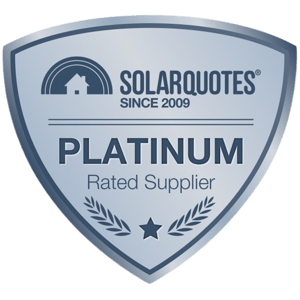
.png?width=514&height=121&name=Tesla%20Powerwall%203%20(new).png)

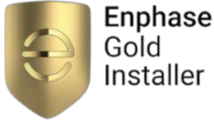
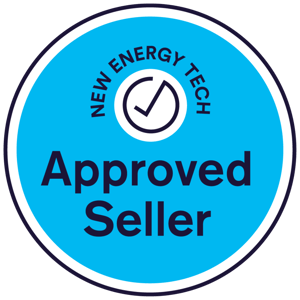
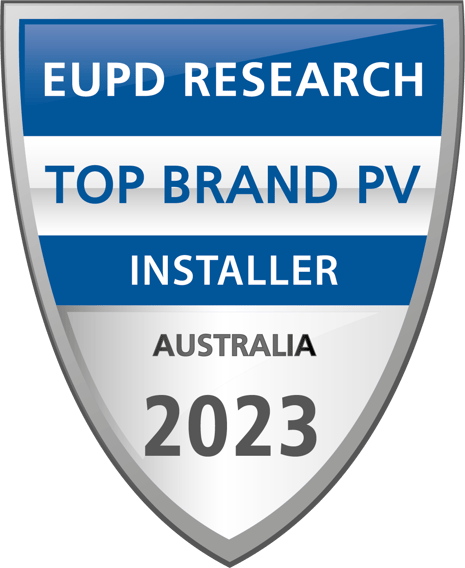


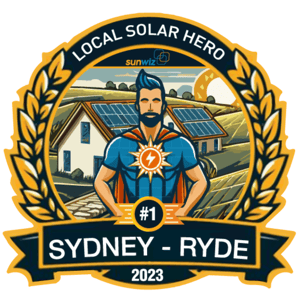

.webp?width=300&height=180&name=sigenergy-gold-installer-300x180%20(1).webp)